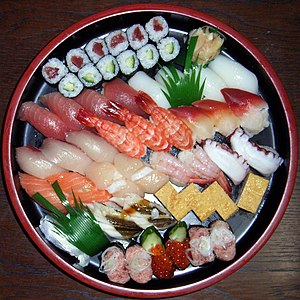By FT’s Gillian Tett:
… in just a few years, sushi has colonised urban centres with startling speed. The first wave of sushi restaurants cropped up in California in the 1970s, partly to service the estimated one million Americans of Japanese descent. But now they are ubiquitous, serving Caucasians too: teenagers take sushi to school; prisons have introduced it; in California, it is served at trucker stops. Meanwhile the National Sushi Association reports that there are now more than 5,000 sushi bars in American supermarkets, with the number continuing to rise fast.
….
The cultural messages embedded in this shift are fascinating. If you are feeling optimistic, you might like to see the sushi invasion as a sign of globalisation – and America’s ability to act as a cultural melting pot. One of the most popular sushi dishes these days is the “California” sushi roll, which blends traditional rice with non-Japanese items such as avocado. In New York you can find “SushiSamba”, which mixes Latin American cuisine with that raw fish. But perhaps the most intriguing issue of all is the ethnicity of sushi restaurant staff. These days sushi restaurants often struggle to get “real” Japanese chefs, since there are not enough to meet the boom. So Chinese, Vietnamese or Filipino staff are used instead. The assumption, it seems, is that Asian faces are required to make the sushi restaurant look “real”; but many customers cannot really tell Chinese and Japanese apart. “Globalisation doesn’t necessarily homogenise cultural differences nor erase the salience of cultural labels. On the contrary, it grows the franchise,” observes Bestor. “The brand equity of sushi as Japanese cultural property adds to the cachet of the country and cuisine.” Even if the face is actually Chinese.

